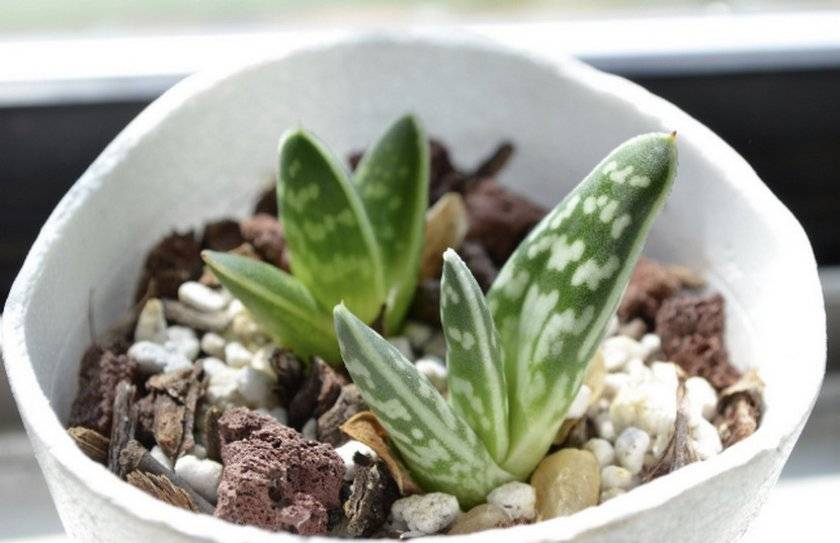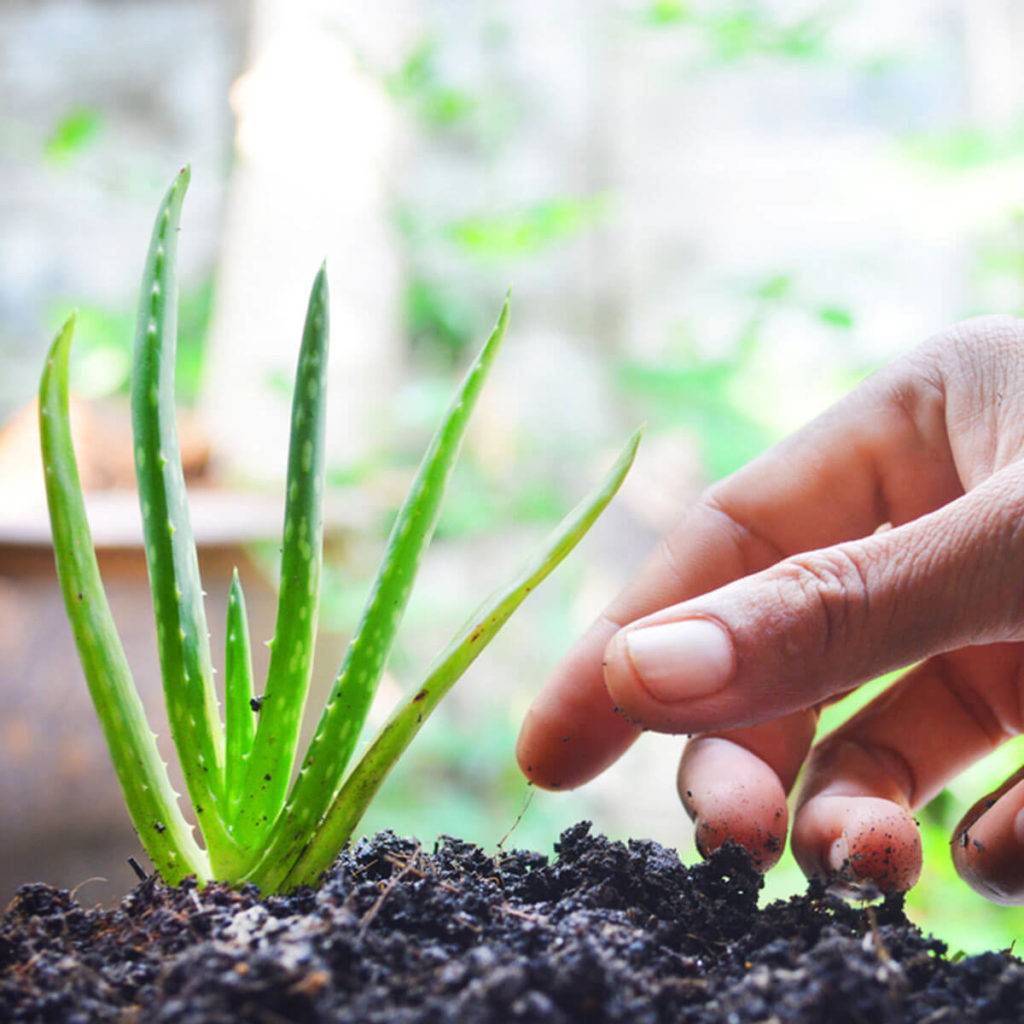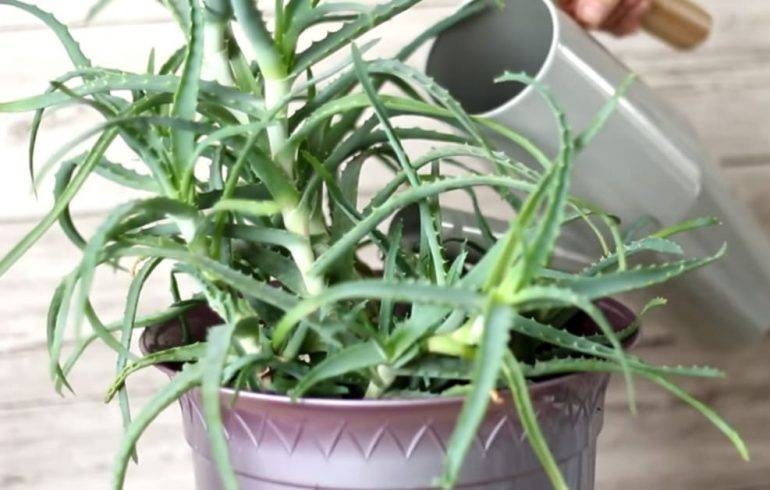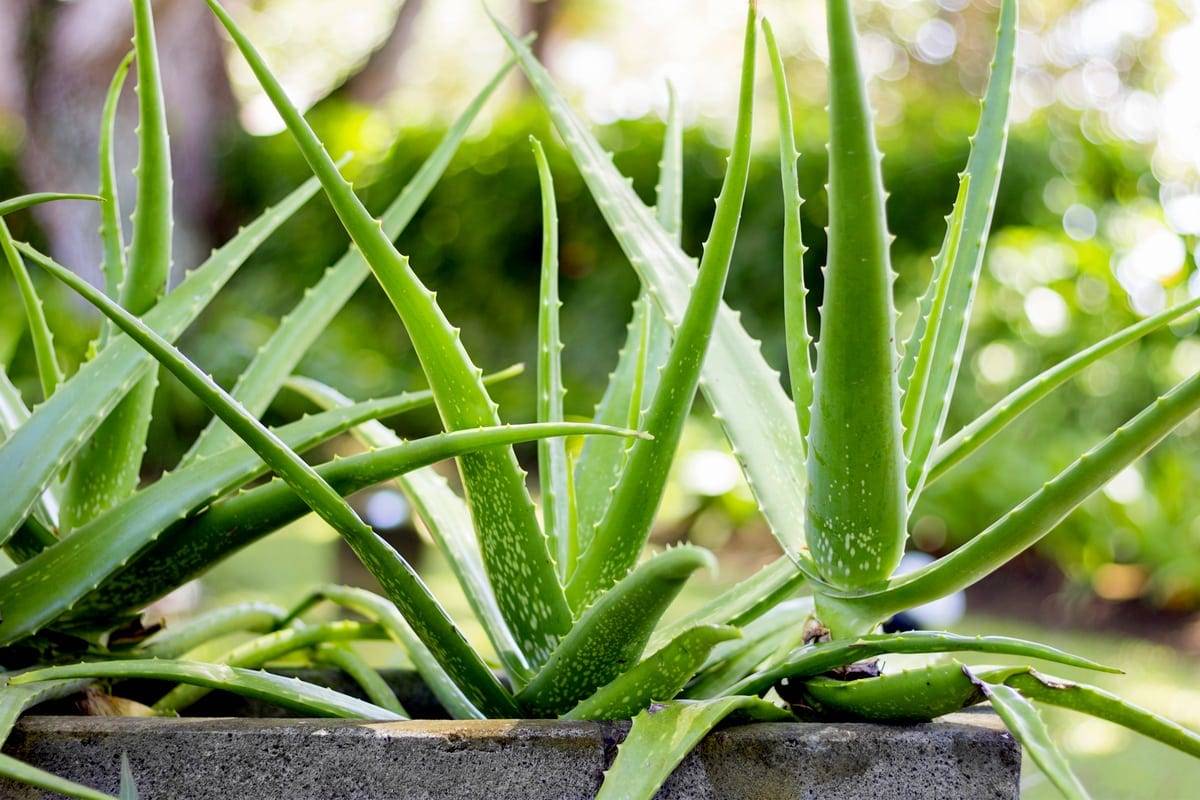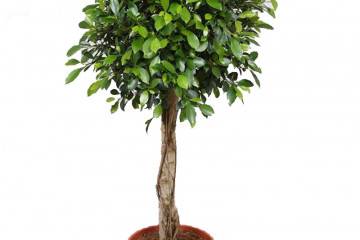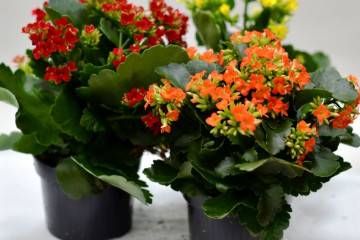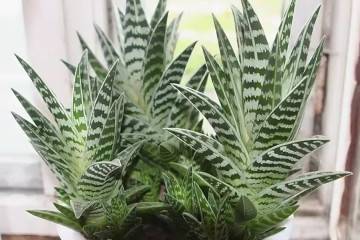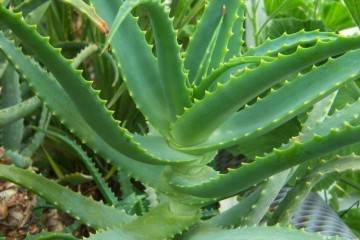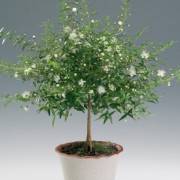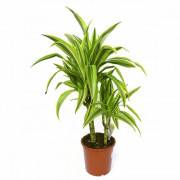How to water aloe correctly, depending on the season
Content:
- Watering aloe - how to do it correctly so as not to destroy the plant
- In which organs does the flower store moisture
- How to water a plant
- Water quality for irrigation, which one is better to use
- A combination of watering and liquid fertilizing when growing
- How many times moisturize in winter
- What will happen if you do not follow the conditions for keeping aloe
- The main mistakes of flower growers when watering
Aloe, or agave, is a succulent with fleshy leaves covered with thorns. This is a very popular house plant that is loved for its medicinal properties and unpretentiousness. But there are nuances in caring for aloe. To grow a beautiful and healthy succulent plant, you need to know how to water your aloe properly.
Watering aloe - how to do it correctly so as not to destroy the plant
Aloe does not need frequent watering, as its leaves are capable of accumulating and retaining moisture. Excess water, like lack of it, directly affects the health of the succulent. To avoid flower diseases, it is important to know how often you need to water the aloe.
The frequency of water treatments depends on several factors:
- season of the year;
- air temperature and humidity;
- the age of the succulent;
- the degree of illumination of the house.
To determine if the aloe needs watering, you need to dip your finger or a toothpick into the pot to a depth of about four centimeters. If this layer of soil is dry, the plant needs water. The soil located higher evaporates moisture faster and is not an indicator of the moisture content of the plant root system.
Outdoor plants do not need additional watering on rainy days. In dry weather, moderate moisture will be needed, which is best done after ordering the sun.
In which organs does the flower store moisture
This succulent is known for its ability to live without water for a long time. It will survive even if you dig it out of the ground and leave it in the air for several months.
The plant has long, fleshy leaves with small spines on the sides. Each leaf consists of a pulp in which moisture is stored and a thick shell. She can retain water by closing her pores.
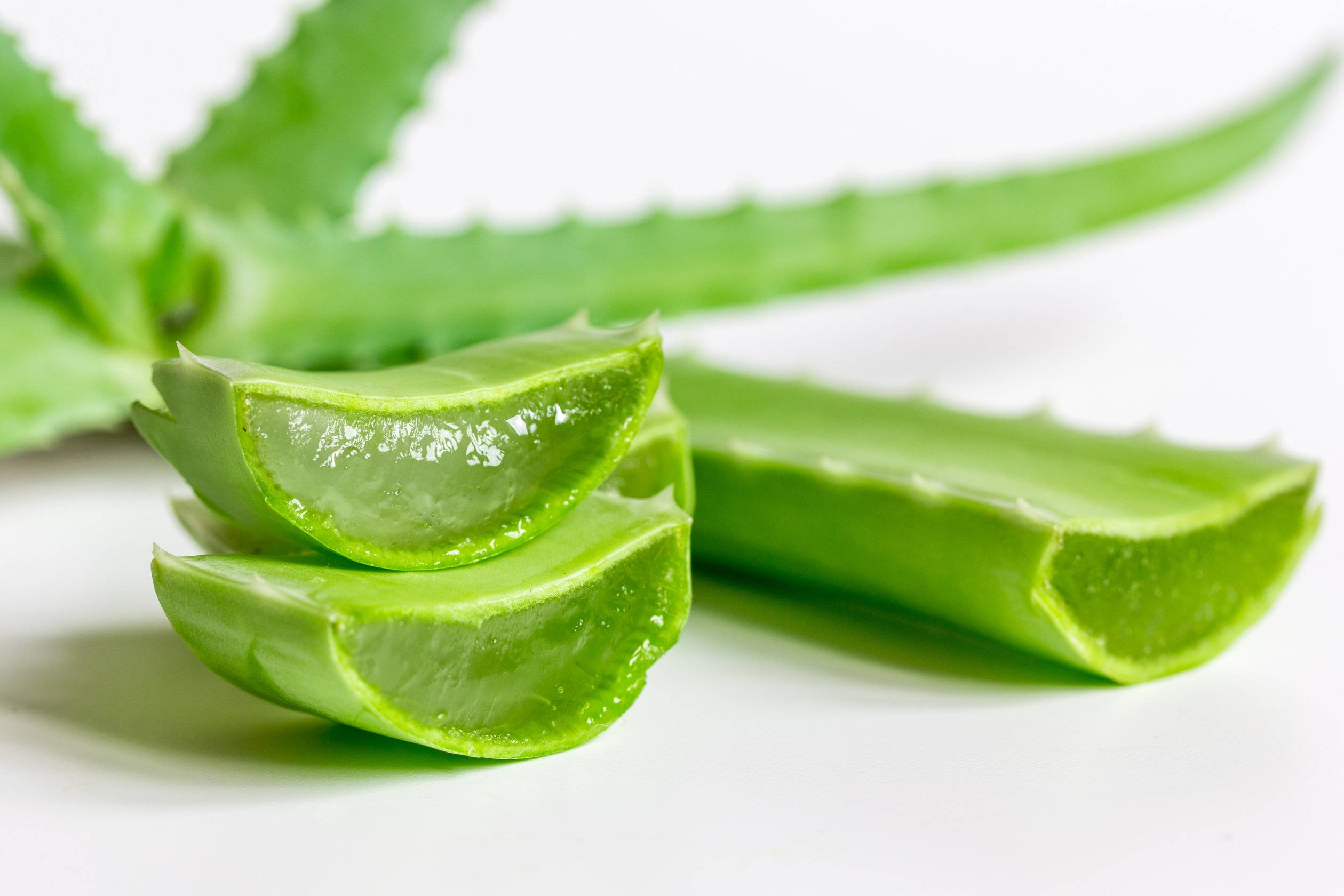
The photo of the leaf in the section clearly shows the skin, which keeps the soft inner part of the leaf moist.
How to water a plant
Depending on the age of the aloe, two watering methods are used:
- Young plants are moistened with preheated liquid through the bottom of the pot. To do this, you can put the aloe in a deep container of water or pour water directly into the pan. This method of irrigation is considered to be as gentle as possible, since when using it, useful substances are not washed out of the soil.
- The land with adult plants is watered abundantly from a watering can, avoiding contact with the leaves - the accumulation of liquid in the aloe sockets can lead to rotting of the stem. In order for the soil to absorb all the moisture, it is preliminarily loosened. No need to direct the stream of water to the roots - this may expose them.
In case of dust accumulation, the foliage is wiped with a damp cloth or cotton pad.
An hour after watering, the remaining water must be drained from the pan.
Depending on the season
Each season has its own characteristics of watering the agave.
After winter, the plant needs more moisture, which it needs to grow.In the spring, it is watered once a week, and in the summer the interval is reduced to twice a week.
In late autumn and winter, the bush requires almost no watering, since it is at rest.
How to water seeds
Seed propagation is a difficult and not the most popular way to propagate aloe.
The germination process is as follows:
- The seeds are soaked in a weak solution of potassium permanganate and placed in a container with previously loosened soil, slightly pressing them into the surface. The distance between them should be about two centimeters.
- A small layer of sand is poured onto the ground.
- The container is lowered into a tray with warm water for a while.
- After moistening the soil, the container is transferred to a warm room. Before the seeds can sprout, the ground must remain moist.
After the first shoots appear, the plant will need to be watered sparingly once a week.
Watering the shoots during reproduction
The easiest way to propagate the agave is by cuttings. After cutting the aloe cuttings, they should not be placed in water. The shoots are sprinkled with wood ash and kept in the air until the roots appear.
Another option is to place them in a container of wet sand. This usually lasts for several weeks. After they are placed in a pot with dry soil. At first, young shoots are not watered.
Choose a pot that is wide enough or the roots won't grow. The diameter of the pot should be about one-half the length of the aloe leaf.
Watering when transplanting
Before transplanting aloe, it should not be watered for a month. It is necessary to transplant the plant into already moistened soil. Watering for the first week after that is also not recommended.
The frequency of transplanting a succulent depends on the age of the plant. Young aloes are planted once every two years, adults - at four. It is recommended to do this in the spring. It was during this period that the agave is maximally ready for growth.
In nature, aloe grows in sand, but at home it is planted in soil consisting of sand, leafy earth and turf. The soil should be loose and soft. A drainage layer is laid out at the bottom of the pot. For this, you can use any suitable material, for example, broken brick.
Water quality for irrigation, which one is better to use
Watering aloe is necessary only with soft water, the temperature of which should be several degrees higher than room temperature. In the summer, the water is additionally heated. Too hard water forms plaque on the soil, and cold water can lead to root rot.
There are several ways to prepare water for irrigation:
- Pour filtered or boiled water into a container and leave for a day.
- Freeze for several hours. Then put it to stand for at least a day.
- Add a little citric or acetic acid (5 g per liter) to the purified water.
- Use melted snow.
A combination of watering and liquid fertilizing when growing
Fertilizing for a home succulent can be carried out along with watering: it is better to use fertilizers during or after watering. Such procedures are carried out only during the period of active growth of aloe - from March to September, and no more than three to four times per season.
Fertilize rich soil only once. Excessive feeding can cause root burns. The fertilizer used is humic fertilizers, potassium phosphate and special ready-made mixtures marked “for succulents”.
In some cases, aloe cannot be fed:
- young plants up to three years old;
- sick or infected with parasites;
- affected by sunlight or lack of moisture;
- plants to be used for cosmetic or medical purposes.
How many times moisturize in winter
Winter is the period when the aloe is dormant. This time plays an important role in the life of the plant.
To gain strength for the new growing season, the plant almost completely stops its development and growth. From November to the end of February, it is watered only once a month.
What will happen if you do not follow the conditions for keeping aloe
Caring for homemade aloe consists in proper observance of the level of heat, moisture and light. Under natural conditions, this succulent grows in hot and arid climates, so it is picky about the level of humidity. With high dryness, the stems of the plant may wrinkle - it is recommended to wipe them with a damp cloth.
The aloe pot should be in a warm, well-lit place. South-facing windowsills are best. In the summer, the agave prefers a temperature of about 25 degrees Celsius. On days when there is no rain, the aloe can be taken outdoors. In winter, the room temperature is reduced by 5-10 degrees.
If the above conditions are not followed, the house plant will begin to wither. In addition, improper care weakens the living organism. As a result, any attacks by pests or pathogens lead to more severe consequences. In the most advanced cases, the flower dies.
The main mistakes of flower growers when watering
When it comes to aloe, watering is one of the most important ingredients in proper care. Almost all diseases of a medicinal plant arise from a violation of the rules of watering. Neglecting them, the owner of the flower runs the risk of completely ruining the plant.
The most common mistakes novice gardeners make when watering aloe should be considered:
- A plant covered with yellow-brown spots means a lot of water getting on the leaves due to inaccurate watering or spraying.
- The leaves that have broken at the base of the stem indicate that it is rotting. This is due to the accumulation of water on the leaves of the aloe.
- Thin drooping leaves signal a lack of moisture.
- A light rusty bloom on the soil, blackened weak stems and an unpleasant, mushroom smell are a symptom of the appearance of bacteria and fungi in the root system. Due to the accumulation of water in the ground, the roots began to rot.
- If you don't use lukewarm water, the aloe will shed its leaves.
If the roots of the plant have just begun to rot, it can still be saved. To do this, aloe is removed from the soil, washed and dried. The rotten parts of the roots are removed. After the plant is dry, it is placed in new soil with a lot of sand. The old soil must be destroyed, and the pot must be disinfected. After a week, the plant can be watered and fed.
It is important to monitor the condition of the plant daily. Any change in the smell and appearance of a flower or its soil can signal serious problems.
This unpretentious succulent is not at all difficult to care for. In order for the agave to grow healthy and beautiful, all the necessary features should be taken into account when watering. Knowing how to water aloe at home can help you avoid common mistakes.
